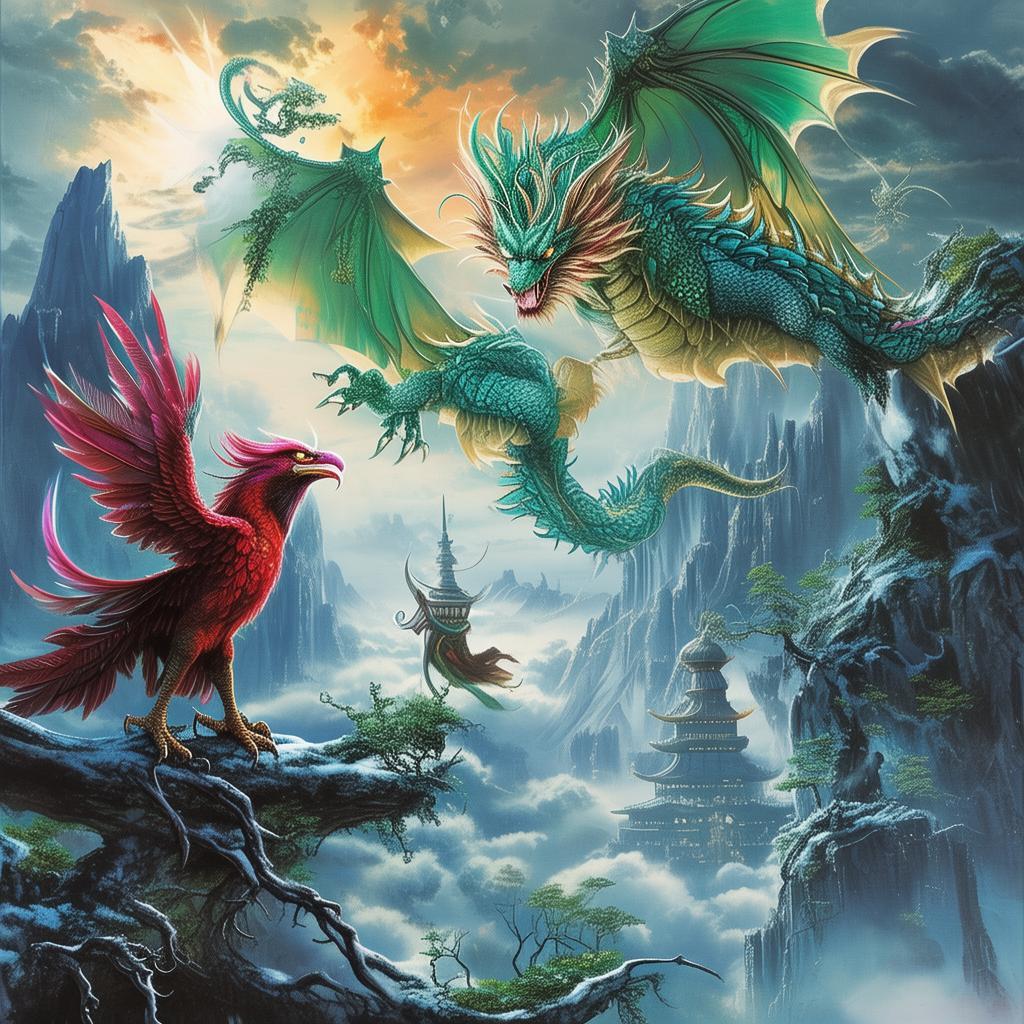The Dragon's Palette: A Shogun's Quest for Mythic Art
In the heart of Edo, where the samurai and the geisha danced in the twilight of a shogunate, there lay a tale of ancient artistry and the mystical power of the Dragon's Palette. This was a tale that began with the Shogun, a man of great ambition and a love for the arts that was as deep as the ocean's depths.
The Shogun, known as Tokugawa Ieyasu, was a man of many contradictions. A warrior who had conquered Japan with the might of his sword, he was also a patron of the arts, with a keen eye for beauty and a desire to preserve the country's cultural heritage. It was during one of his frequent forays into the Kyoto art galleries that he first heard of the Dragon's Palette, a legendary artifact said to possess the power to paint the essence of life itself.
According to the tales, the Dragon's Palette was crafted by an ancient master, a painter who had achieved such mastery over the brush that he could imbue his art with the spirit of the living. The palette was said to be imbued with the essence of the dragon, a creature of both myth and reality, and with it, the artist could create works of art that could either bestow life or bring about death.
Intrigued and driven by his own desire to leave a lasting legacy, the Shogun set out on a quest to find the Dragon's Palette. He sent his most trusted samurai, a man named Katsuragi, to venture into the remote reaches of Japan, where the legends spoke of the palette's resting place.
Katsuragi, a master of the sword and a connoisseur of the arts, set out on his journey with a mixture of fear and excitement. He traveled through the treacherous mountains of the Kanto region, the dense bamboo forests of the Shikoku islands, and the barren lands of the Tohoku. Along the way, he encountered spirits of the dead, the whispers of the forest, and the silent guardians of ancient temples.
One fateful night, as the moon hung low and the stars shone brightly, Katsuragi found himself at the edge of a cliff overlooking the sea. Below him, the waves crashed against the rocks with a fury that matched his own heart. It was there that he met a mysterious woman, her eyes like pools of ancient wisdom, who spoke of the Dragon's Palette and its power.
The woman, known only as Kikko, revealed that the palette was not a mere object but a symbol of the balance between life and death, art and nature. She told Katsuragi that the true power of the palette could only be unlocked by one who understood the essence of the world around them, who could paint not just with their hands but with their heart and soul.

Intrigued, Katsuragi followed Kikko to an ancient temple, hidden within the folds of the mountains. There, amidst the dust of time, they found the Dragon's Palette, its surface etched with the patterns of the cosmos. Katsuragi, now understanding the true nature of the palette, began to paint, his strokes flowing like the currents of the sea, his colors blending into the essence of the world.
As he painted, the temple came alive, the walls whispering tales of the past, the floor pulsing with the heartbeat of the earth. The Shogun, who had been watching from afar, felt a strange connection to the palette, as if it were calling to him, beckoning him to understand the deeper truths of existence.
Katsuragi completed his masterpiece, a painting that captured the essence of the Dragon's Palette, and in that moment, he realized that the true power of the palette was not in its ability to bestow life or death, but in its ability to reveal the truth of the world. The Shogun, moved by the painting, realized that the legacy he sought was not one of power, but of understanding and peace.
The Dragon's Palette remained in the temple, a testament to the balance between the earthly and the mystical, a reminder to all who beheld it that the true treasure of the world was not in the material, but in the spirit and the heart.
And so, the Shogun returned to Edo, his quest completed, his legacy not one of conquest, but of enlightenment. The Dragon's Palette became a symbol of the shogunate's love for the arts, a testament to the belief that beauty and power were not mutually exclusive, but two sides of the same coin.
The story of the Dragon's Palette spread far and wide, a mythic tale that lived on in the hearts of the people, a reminder that the true strength of a leader lay not in the sword, but in the heart and the soul.
✨ Original Statement ✨
All articles published on this website (including but not limited to text, images, videos, and other content) are original or authorized for reposting and are protected by relevant laws. Without the explicit written permission of this website, no individual or organization may copy, modify, repost, or use the content for commercial purposes.
If you need to quote or cooperate, please contact this site for authorization. We reserve the right to pursue legal responsibility for any unauthorized use.
Hereby declared.









